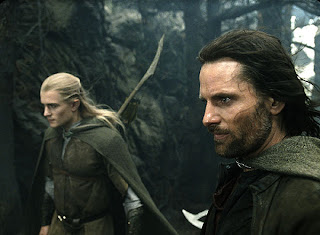Introduction to Italian Neo-Realism
Italian Neo-Realist
films are among the most influential films of all time, simply for the fact
that they used a realistic stylistic approach that was alternative to that of
the glossy Hollywood films (Corrigan & White, 2009), and that they
realistically discussed themes and subjects that were present throughout Italy
at the time, breaking away from the “vacuous entertainment” that Italian cinema
was previously regarded as (Monticelli, 2000). While Italian Neo-Realism was
made distinctive as a result of elements of cinematography such as shooting on
location and using natural and available light on “set”, there is so much more
to Neo-Realism than what we see on the screen. In no other film is this more
evident than in Vittorio De Sica’s 1948 masterpiece Bicycle Thieves, a film that is a fantastic example of neo-realism.
Story Instead of Plot
Of all the 90 or so
Neo-realist films (Monticelli, 2000) made during 1942-1952 (Corrigan &
White, 2009), none of them had as much impact as that of Bicycle Thieves. The story of a man, Antonio Ricci, played by Lamberto Maggiorani,
and his son Bruno (Enzo Staiola) searching for his bicycle which was stolen by
a young thief. Just by looking at the story, you can see how the film is a
great example of neo-realism, for the film has more of a story than a plot.
What happens in the film doesn’t follow a cause and effect pattern, rather
events just occur, much like life itself.
There is much more to the film than a man just searching for his bike.
We see themes presented such as “human suffering in a hostile environment”
(Sorlin, 2005). This theme is easily
summarised through the opening and closing shots of the film, where we see
Antonio caught up amongst hundreds of people, who all appear to be in the same
boat as him. The fact that we see more story than plot comes down to the fact
that Neo-Realist films have little editing, providing real continuity. For
example, there is a shot in the film of Bruno using the toilet, a shot that was
perhaps unnecessary to the story but necessary in conveying the realism of the
film, showing how Bicycle Thieves is
an ideal presentation of Neo-Realism.
Real Characters and Situations
Film theorist Andre Bazin
in his essay Neorealism and Pure Cinema:
The Bicycle Thieves (Bazin, 2007) defined Bicycle Thieves as “pure cinema…it tells a simple story composed of
real events involving real people in real places.” This is another way that the
film can be seen as an ideal example of neo-realism. The film includes
characters that the Italian people of the time could relate to, and placed
these characters into situations that people could also relate to. The
importance of a bike to Antonio could mean nothing to us living in the
developed world of the 21st century. However, we need to place
ourselves in the context of the period. The film is set in a period when
mechanical transportation was rare and expensive (Bazin, 2007). What we see in
the film isn’t fiction; it’s the type of living conditions that people were
living in. This wouldn’t be as accurately conveyed across if it weren’t for
real characters that we are also presented with. There isn’t anything
theatrical about these characters. All of the characters actions and reactions
mirror that of regular people. Pierre Sorlin in his book Italian National Cinema: 1896-1996 (Sorlin,
2005) states that “when [Antonio’s] bike is stolen, there are no hints to the
man’s state of mind. We only see his immediate, erratic reactions.” This also
comes down to the fact that neo-realist films use unprofessional actors instead
of major stars. Therefore, Bicycle
Thieves is an ideal example of neo-realism.
Conclusion
Vittorio De Sica’s Bicycle Thieves is a fine example of how
to convey neo-realism by using more than just cinematography. Through having
more of a story than a plot, as well as placing real characters in real
situations and having them deal with themes such as human suffering, we can see
that Bicycle Thieves is an ideal presentation
of neo-realism.





















